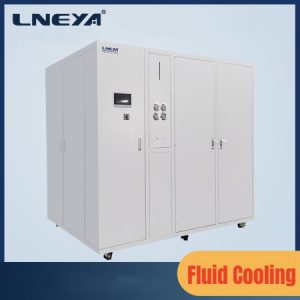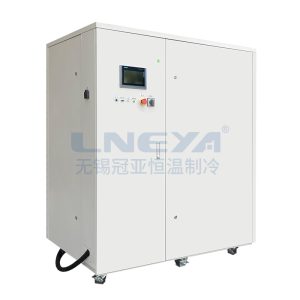What is the method of reducing exhaust temperature for air cooled chiller?
What is the method of reducing exhaust temperature for air cooled chiller?
1. Increase the flow of cooling water and the heat dissipation and ventilation of water tanks and towers.
The cooling water in the water tank of the air-cooled cooler and the cooling water tower of the industrial water-cooled chiller exists for the cooling and heat exchange of the condenser. It can take away the heat generated by the compressor’s operation. If the cooling water flow rate and the heat dissipation and ventilation capacity of the air-cooled industrial chiller water tank and the water-cooled industrial chiller water tower can be guaranteed, the cooling water temperature can be maintained within a limited range to maximize the cooling of the compressor.
2. Directly reduce the exhaust temperature of the refrigeration compressor.
The so-called direct reduction of the exhaust temperature of the compressor can be achieved by reducing the compression ratio and load of the compressor. Although reducing the compression ratio may reduce the efficiency of the compressor, it can solve the problem of high exhaust temperature of the compressor.
3. Reasonably utilize refrigerant.
Different types of refrigerants have different exhaust temperatures, and in addition to the common R22, there are also refrigerant types such as R134a. Users should add different refrigerants according to the requirements of industrial chiller manufacturers.
Firstly, an important factor is to ensure that the cooling system of the air-cooled cooler is in good working condition. This means that it is necessary to regularly inspect and maintain the various components in the cooling system to ensure their normal operation. Regularly clean and replace the condensate or water pipes in the cooler to ensure smooth cooling water flow and ensure that the pipes are not clogged or leaking.
In addition, timely replacement of filters in cooling water and disposal of residues are also necessary. These measures can effectively reduce the resistance of the cooling system, improve the cooling effect, and thus reduce the impact of exhaust temperature.
Secondly, the use of efficient heat exchangers is another key factor in reducing the exhaust temperature in screw air-cooled coolers. The heat exchanger is the core component for heat transfer in air-cooled coolers, and its design and selection are crucial for controlling exhaust temperature.
Choosing a heat exchanger with high heat transfer efficiency and good heat transfer performance can significantly improve cooling efficiency and reduce the impact of exhaust temperature. At the same time, optimizing the structure and tube bundle layout of the heat exchanger is also crucial, as it can improve fluid fluidity and heat transfer efficiency, thereby further reducing exhaust temperature.
In addition, adjusting the working parameters and control strategy of the air-cooled cooler can also reduce the impact of exhaust temperature. By reasonably setting the operating parameters of the unit, such as cooling water temperature, cooling water flow rate, condensation and evaporation pressure difference, the best cooling effect can be achieved. In addition, adopting advanced control strategies such as variable frequency speed regulation and load optimization control can improve the operational stability and efficiency of the unit, thereby reducing the impact of exhaust temperature.
 LNEYA Chillers
LNEYA Chillers




HelloLog in